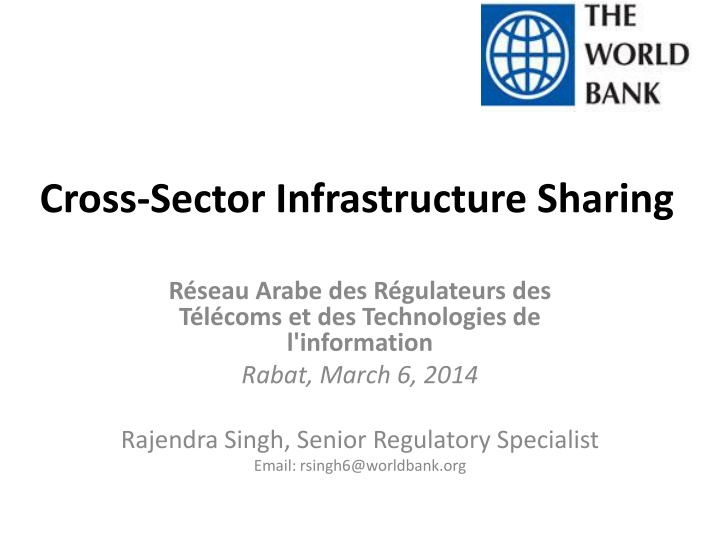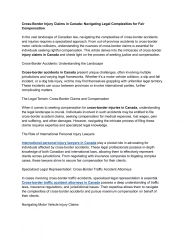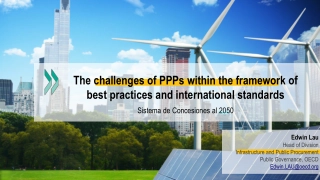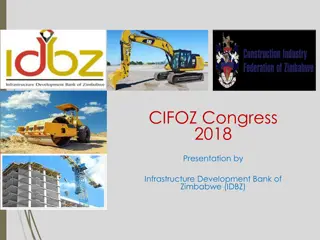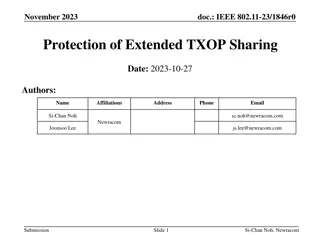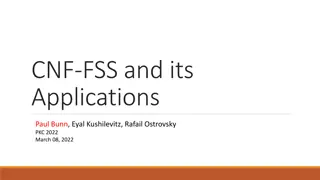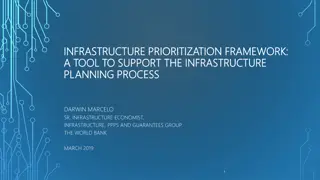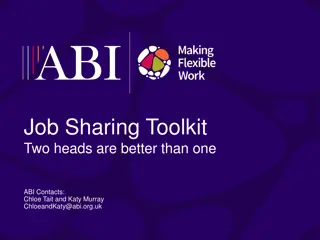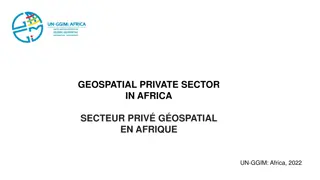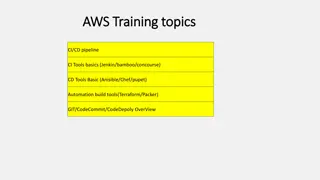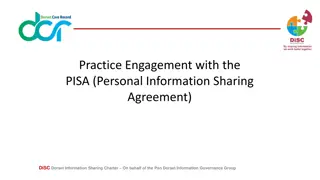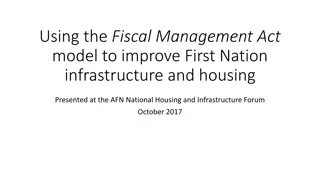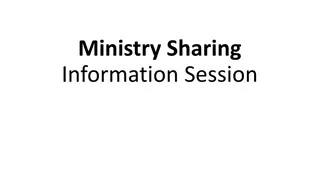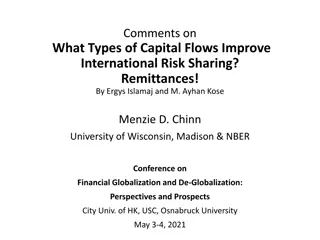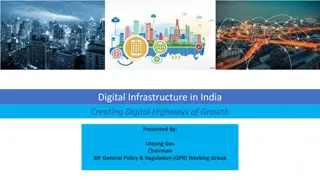Cross-Sector Infrastructure Sharing
This content discusses the benefits of sharing infrastructure across sectors like Telecom, Energy, and Transport, emphasizing cost reduction, efficiency, and potential for revenue generation. International experiences and case studies highlight successful practices in leveraging surplus capacities. Policy decisions in various regions further exemplify the significance of integrating infrastructure development for optimal outcomes.
Download Presentation

Please find below an Image/Link to download the presentation.
The content on the website is provided AS IS for your information and personal use only. It may not be sold, licensed, or shared on other websites without obtaining consent from the author.If you encounter any issues during the download, it is possible that the publisher has removed the file from their server.
You are allowed to download the files provided on this website for personal or commercial use, subject to the condition that they are used lawfully. All files are the property of their respective owners.
The content on the website is provided AS IS for your information and personal use only. It may not be sold, licensed, or shared on other websites without obtaining consent from the author.
E N D
Presentation Transcript
Cross-Sector Infrastructure Sharing R seau Arabe des R gulateurs des T l coms et des Technologies de l'information Rabat, March 6, 2014 Rajendra Singh, Senior Regulatory Specialist Email: rsingh6@worldbank.org
Cross-Sector Synergy We are all convinced that sharing infrastructure within Telecom and across Energy, Transport Sectors is a Win-Win Situation and sharing of infrastructure will bring down the cost of telecom services; This is also applicable to Gas and water, or any other linear infrastructure; OPGW is laid along Operation & Maintenance of Electricity System; Electricity Transmission Lines because this is must for Optical Fiber cable is laid along Railway Lines because Railway operation needs telecom connectivity; Electricity capacity. Sector and Railways use could be less than 0.01 percent of total Should not Electricity and Railways make more money by selling the surplus capacity in telecom market and contribute to growth of Telecom and Internet connectivity?
Road Construction and Telecom Connectivity Road Construction involves lot of earth work and trenching, which constitute 70-80 percent of Optical Fiber System Cost, so why to duplicate this trenching work- Once for road construction and then again for Optical Fiber Cable? The typical incremental cost for laying HDPE pipe at the time of construction of road could be less than 0.02 percent of total road construction cost. Once this pipe is laid at the time of road construction then telecom companies can simply pull the optical fiber cable inside this pipe and duplication of trenching is avoided. This will save lot of money and increase road life and quality. In addition, no inconvenience, no damage to infrastructure by multiple trenching. Telecom Connectivity Helps in implementation of Intelligent Transport System (ITS).
International Experience If it is so good, then this must be happening in many countries the answer is YES Most of the Electricity Transmission companies and Railways are leasing out their surplus capacities in telecom market on an open access basis (i.e. not exclusivity contract). Few examples of Railways are: Georgia Railways, Bangladesh Railways, most of EuropeanRailways, Indian Railways and many more. Examples of Electricity Companies are: Indonesia, Bhutan, Turkey, Vietnam, Brazil, USA, Canada, India , and many more.
International Experience Road and Telecom Maharashtra State, India- Policy decision Laying the duct at the time of constructing new roads. Afghanistan National policy decision and execution through budget order issued by MoF. Future planned activities in Iraq and Yemen both North South Transport Highway Corridor Projects.
